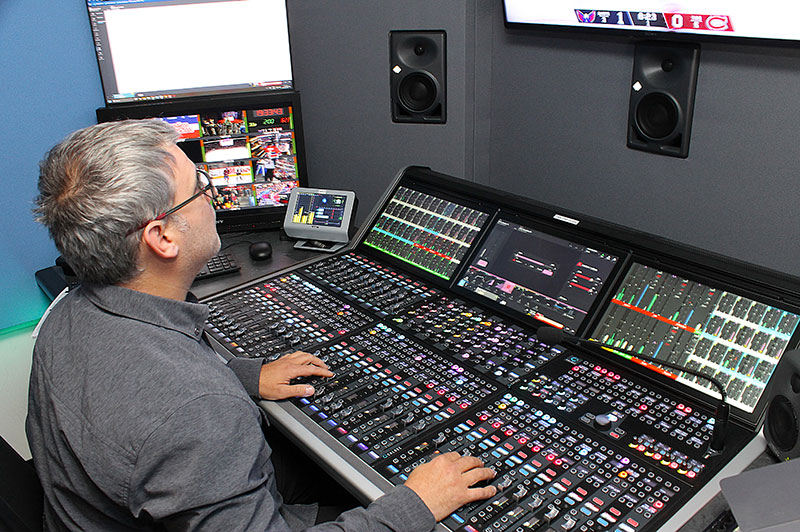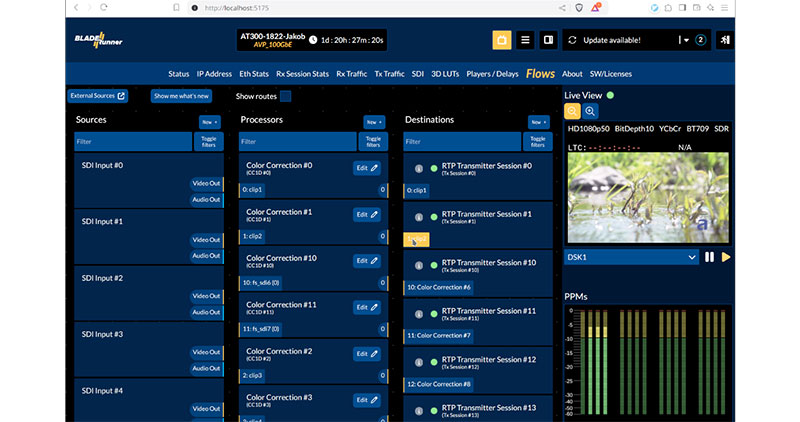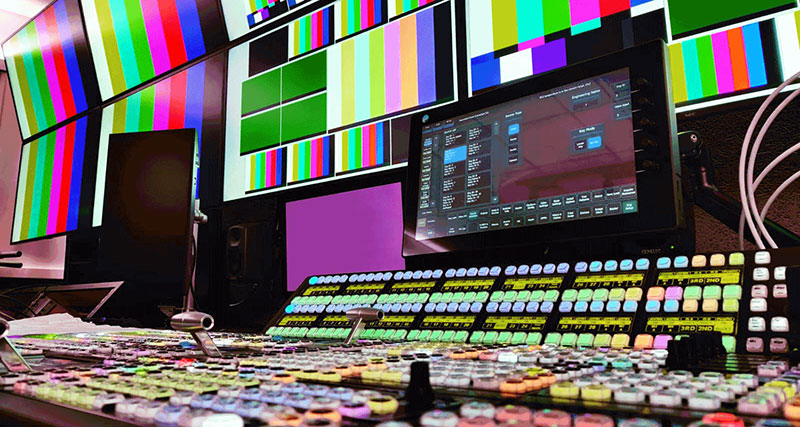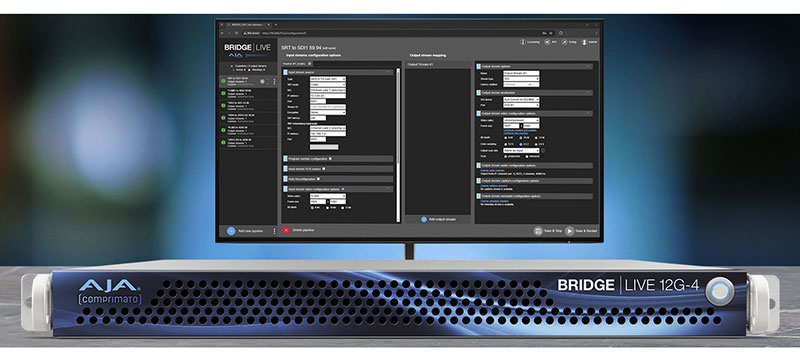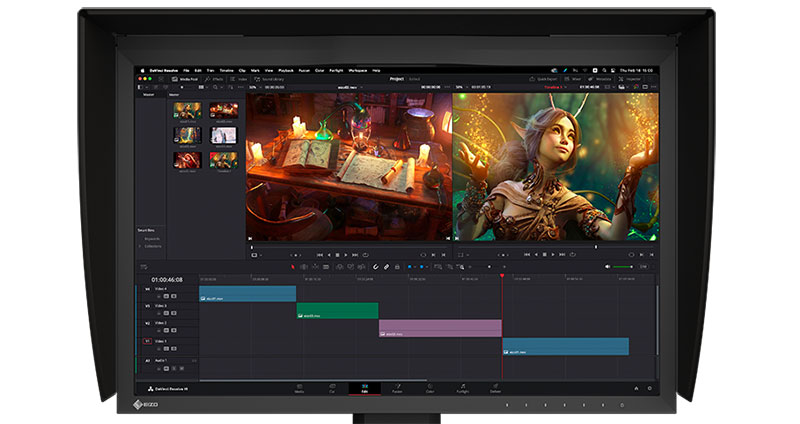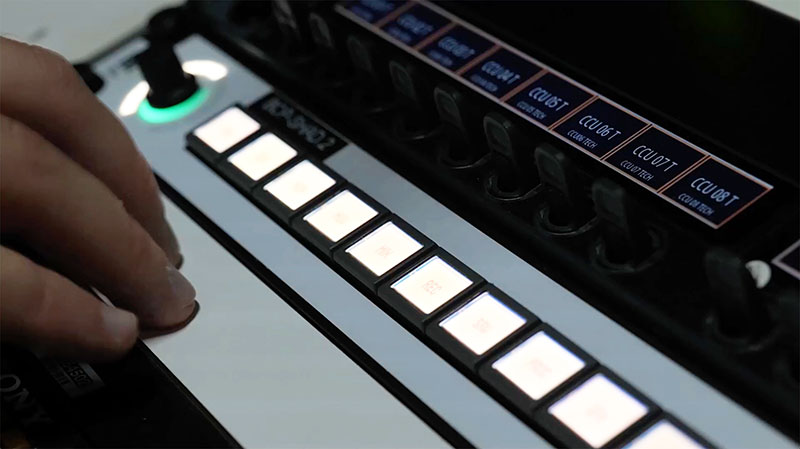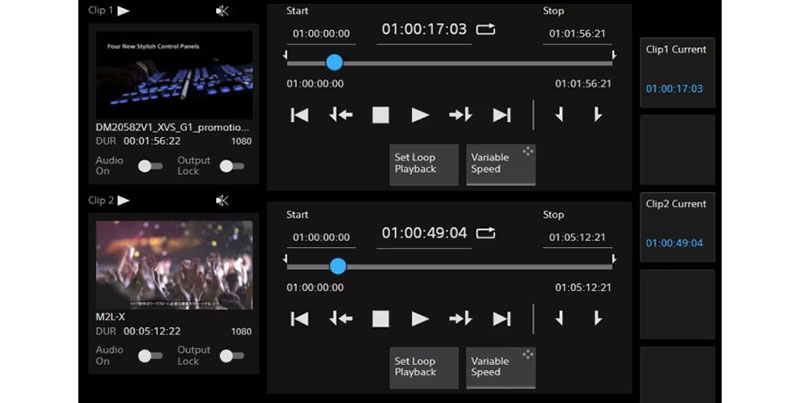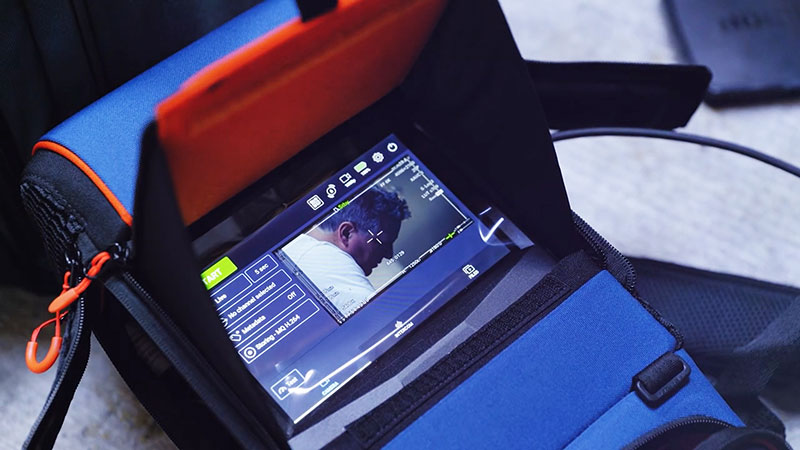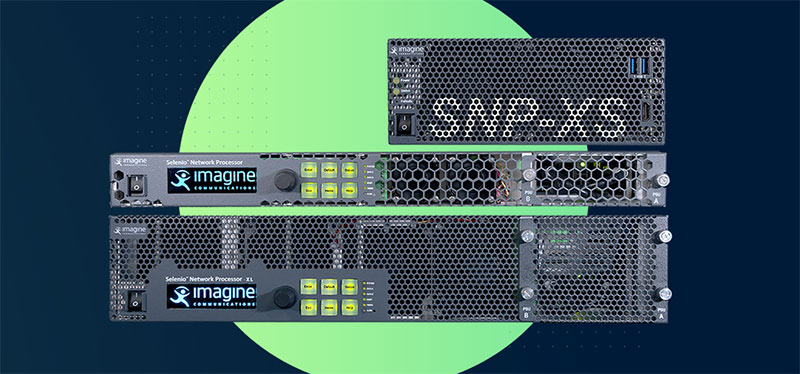AMD introduced new AI-capable processors built on Zen 5 architecture, fast graphics cards and chipsets at Computex 2024, where OEM developer partners announced upcoming products.
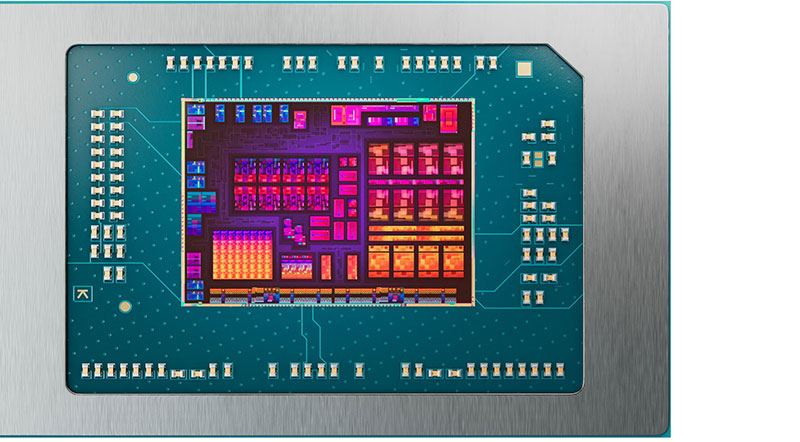
AMD Ryzen AI 300 Series processor
The new AMD Ryzen AI 300 Series processors, first shown at Computex 2024 in Taipei on 3 June, are built with Neural Processing Units (NPUs) for use in AI PCs, enabling AI-based computing directly on laptop computers. At the same event, AMD showed new Ryzen 9000 Series processors for desktops. Both are part of AMD’s portfolio of products running AI in the cloud, at the edge, on clients and beyond.
AMD Ryzen AI 300 Series processors are compatible with Microsoft Copilot+ PC specifications, and able to work with AI models on laptops. Built on the new AMD XDNA 2 architecture, the processors’ new NPU is capable of 50 TOPS (trillions of operations/sec, measuring potential AI inferencing performance) of AI processing power, surpassing Copilot+ AI PC requirements (currently 40+ TOPS), with three times the AI engine performance of the second generation of AMD Ryzen AI.
Zen 5 Architecture
This series of processors is powered by new Zen 5 architecture, which means they are equipped with up to 12 high-performance CPU cores with 24 threads and 50% more on-chip L3 cache memory compared to Zen 4 processors for thin, light laptops. Located outside the CPU and shared by all cores, the L3 cache has a role in data sharing and inter-core communications. The processors' combined AI architecture, performance and responsiveness suit intelligent processing and high level gaming.
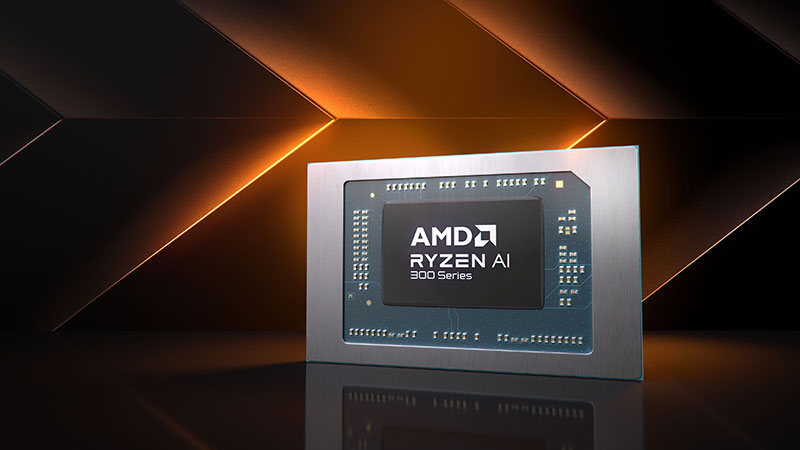
For desktop PCs, the new AMD Ryzen 9000 Series desktop processors are built on the same Zen 5 architecture, and deliver an average of 16% better IPC (interprocess communication) performance than Zen 4. IPC allows different programs to collaborate and interact with each other – share data, synchronise their actions and coordinate their operations, resulting in more effective software systems.
Jack Huynh, senior vice president and general manager, Computing and Graphics Group at AMD said the AMD Ryzen AI 300 series processors push the potential of modern PCs, featuring fast APU performance and one of the first block floating point NPUs (able to represent numbers of extreme orders of magnitude with a fixed number of digits), doubling the performance of 16-bit applications while preserving accuracy. APUs are AMD’s accelerated processing units, aligning a CPU and GPU on a central die allowing them to efficiently share resources.
AMD Ryzen AI 300 Series Processors
Built using AMD RDNA 3.5 graphics architecture supporting Radeon 800M Series GPUs, the AMD Ryzen AI 300 Series processors deliver smooth video at all frame rates. Their defining features in terms of laptop computing are fast performance for intensive multitasking, gaming and content creation.
Regarding AI, the focus is on responsive, efficient processing of local AI workloads, and automating workflows where appropriate to support users’ creativity. The efficiency of the processors also helps prolong battery life.

AMD Ryzen 9000 Series
AI PC and other OEM Partnerships
AMD’s OEM partners including Acer, ASUS, HP, Lenovo and MSI are announcing more AI PCs enabled by AMD Ryzen AI 300 Series processors, and ecosystem partners like Microsoft and Zoom are working with AMD to expand the potential of AI PCs.
Apart from the Microsoft Ryzen AI powered Copilot+ PCs mentioned above, ASUS is announcing new systems powered by AMD Ryzen AI 300 Series processors, including the ROG Zephyrus G16, ProArt P16 and PX13, Zenbook S 16 and ASUS Vivobook S 14, S 15 and S 16. Later this year, through their partnership with AMD, HP will introduce their next OmniBook AI PC.
Lenovo will launch ThinkPad laptops with 3rd Gen Ryzen AI processors for professional users, and ThinkBook models for small-and-medium-sized businesses. MSI’s most recent AI PCs powered by AMD include the Stealth A16 AI+, Summit A16 AI+, Prestige A16 AI+ and Creator A16 AI+.
Zoom has pursued the use of AI to extend their users’ collaborative experiences through an AI-powered assistant, Zoom AI Companion. The company is now working with AMD on features for AI Companion and Zoom Meetings that can run locally on the Ryzen AI platform.
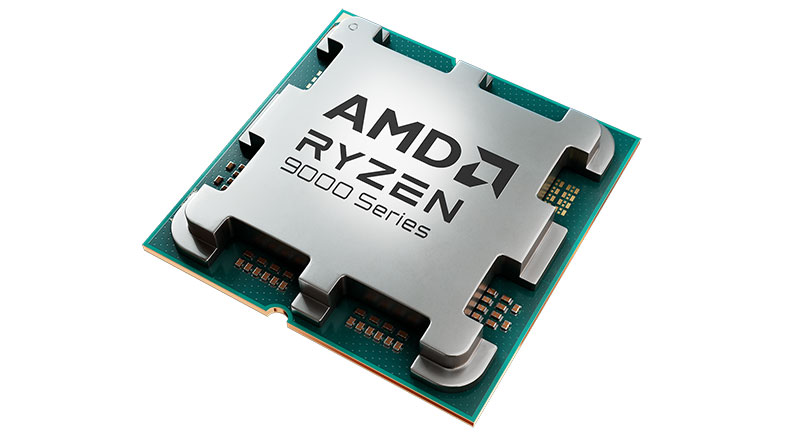
AMD Ryzen 9000 Series Desktop Processors
AMD Ryzen 9000 Series desktop processors are made for professional content creation workflows, ranging from 3D modelling and animation to design and product visualisation. They deliver single-threaded and multi-threaded performance, capable of accelerated design, rendering and iteration. Availability is anticipated in July 2024 for DIY customers and systems integrators.
New Chipsets for Socket AM5 Motherboards
The Socket AM5 motherboard family has two new chipsets, the AMD X870E and X870, that are designed to integrate with AMD Ryzen 9000 Series desktop processors and support WIFI7. Built for longevity, Socket AM5 platforms come with support through 2027 and beyond.
These new chipsets feature USB4 as standard and are also designed to support DDR5 memory overclocking with AMD EXPO (Extended Profiles for Overclocking) Technology. Both the X870 and X870E have 44 total PCIe lanes and direct-to-processor PCIe 5.0 NVMe connectivity for high transfer speeds. The X870E is differentiated with 24 PCIe 5.0 lanes, of which 16 are dedicated to graphics. When PCe 5.0 direct-to-processor storage and graphics are are enabled at the same time, the X870E achieves very high bandwidth as well.
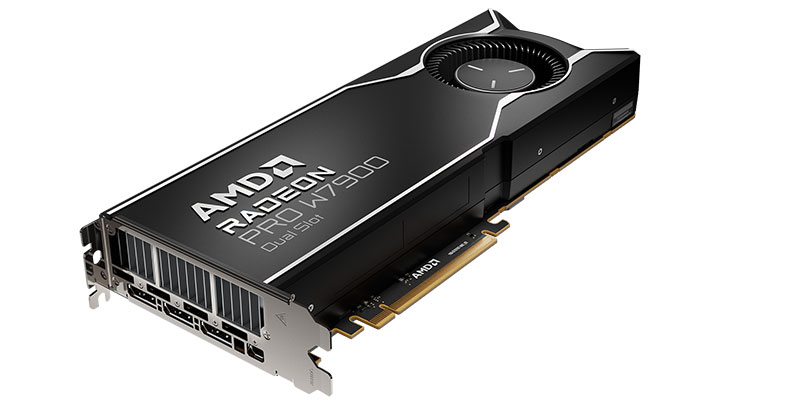
Radeon PRO W7900 Dual Slot workstation graphics card
New Desktop Processors Extend AM4 Platform Support
AMD is continuing its support for the AM4 platform and has built two new models for the Ryzen 5000 Series desktop processor line – AMD Ryzen 9 5900XT and Ryzen 7 5800XT desktop processors – which are expected to be available to DIY customers and systems integration partners starting July 2024.
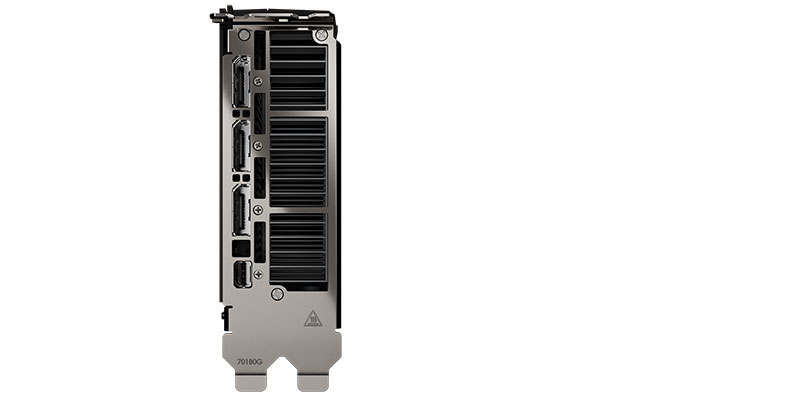
Radeon PRO W7900 Card to Support Local LLM Development
A new AMD Radeon PRO W7900 Dual Slot workstation graphics card will soon be available, optimised for high-performance platforms supporting multiple GPUs. According to AMD, it delivers significantly better performance-per-dollar in the Llama 3 70B large language model than many of its competitors and can fit the 70B parameter model on a single GPU framebuffer. This means developers are able to conduct AI development locally, as it supports ultra-high-performance AI workstations, while keeping sensitive data in-house. Availability starts in mid-June 2024. www.amd.com







